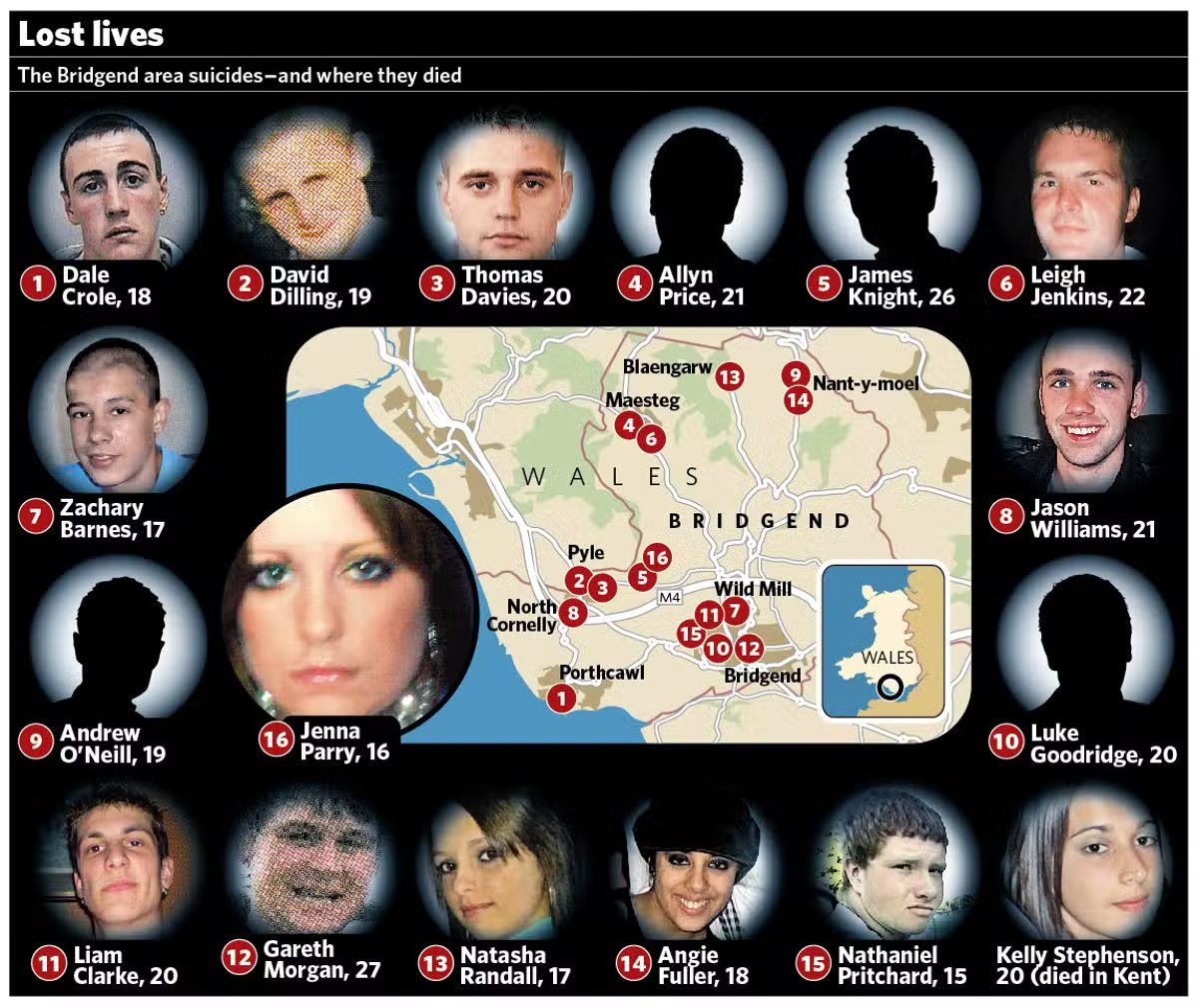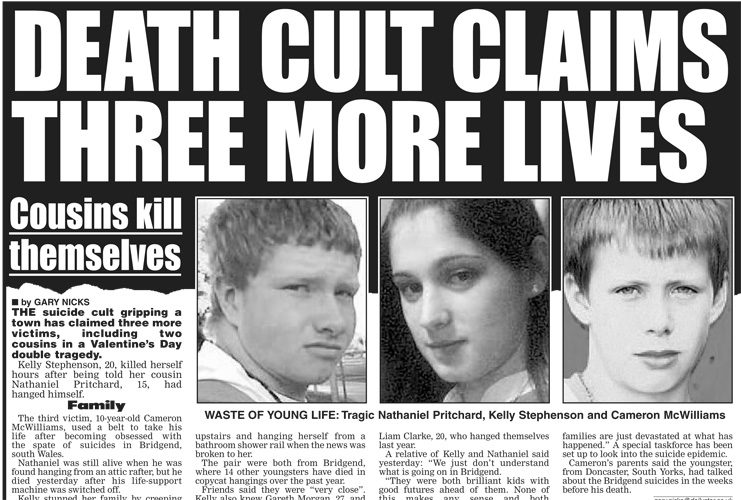The media has been an agent of both good and evil. While making billions worldwide aware of what is happening elsewhere, it also has the notorious reputation of glamourizing everything from voracity to murders. To laymen, nothing seems to pass the eye of media without being tainted by it. Inspiration for the 2015 Danish film “Bridgend” and the 2016 book “The Bridgend Suicides: Suicide and the Media” by Ann Luce. When the 26 suicides in Bridgend County of South Wales became the target of media exploits, the parents of the deceased teenagers accused the newspapers and social networks of promoting their deaths.
The lowlands of South Wales have conceived many suicides over the years. While some blame the gloom of the backwaters, there is no telling the cause of these mass suicides that occurred mainly between 2007 and 2008. The Greek philosopher and Priest Plutarch had long talked about the phenomenon while retelling the account of the mass suicides of women in Miletus, which stopped when the women were threatened that their nude bodies would be paraded by being dragged upon the streets of the Greek city.
The Werther effect, as named after the protagonist of the novel “The Sorrows of Young Werther” by the German novelist, Johann Goethe, is the emulation of a publicized suicide by individuals. Christened so after the mass suicides of the European men in 1774 who began dressing up like young Werther and subsequently taking their lives. Psychologists say it is an effect of deindividuation, where the person is no longer one but becomes a part of the herd commenting violence with little to no threshold, much like the surge of serial killers during the 70s and 80s in America.
England and Wales had seen the phenomenon of self-immolation during the 1970s when about 82 women in their 30s killed themselves, even more so after the media glamourized it. So, what happened in Bridgend? Was it another wave of the Werther effect, or were the youngsters propelled into action by an internet cult?
Also Read: The Legend of The Wendigo: Everything To Know
Gone Home Early
The news of the Bridgend Suicide incidents is not unknown to people. Most say it is caused by hopelessness about their futures that the youngsters felt suffocated in their tiny town, yet not every individual who sees themselves in a hard place ends up committing suicide. The first recorded case took place in the form of 18-year-old Dale Crole, who hung himself in the January of 2007 for unknown reasons. Six weeks later, his friend, 19-year-old David Dilling, followed suit. And seven days after him, 20-year-old Tom Davies imitated his friend. The suicides left grief and terror in the hearts of their parents. Grief for the loss of their sons and daughter and terror that their other children will emulate their siblings. The horror of mothers having to find their children hanging dead by the trees in front of their windows did not cease.

Mothers of boys like Justin Beecham blame the hospitals that did not take their sons seriously. Elaine Beecham insisted that her son, who was admitted to Princess of Wales Hospital after an attempted suicide, said he was hearing voices in his head asking him to do it, but the psychiatric nurse discharged him without seeing a doctor. On the same night of 26th February 2010, at 1 am, the boy tried to hang himself and succeeded. Experts talk about behavioral contagions, like in the case of Marilyn Monroe, whom 197 blonde women imitated by similarly taking their lives.
People blame the media for the spread of this endemic. Romanticizing of suicide on dedicated sites that emerge after such incidents as mushrooms in a damp place inciting youngsters to follow their fellow youths to the grave because it is “inspiring.” One such incident would be the suicide of a 14-year-old Nakia Venant from Miami, who live-streamed her suicide on Facebook in imitation of a 12-year-old Katelyn Nicole Davis from Georgia, who broadcasted her death three weeks prior. The most horrifying part was that the cops who were trying to save Nakia were given the wrong address by a member of the Facebook Live audience of the 2-hour death stream.
Also Read: The Unsolved Mystery Of Olivia Mabel: Letters To A Lost Son
Rituals And Sacrifice
After the mass suicides, several Satanist offenders were caught and prosecuted within the region, leading people to believe the source of these suicides was something more sinister. Ritual violence ideologies are not something new. Some say the organized fashion and the voices that Beecham heard could suggest a ritualized crime abuse network at work in Bridgend. In 2008, on the 19th of February, Jenna Perry had hung herself in the woods of Snake Pit a kilometer away from her village Cefn Cribwr, beyond the outskirts of Bridgend.
A page was put up as her memorial on Bebo, and some of her “friends” who wrote long eulogies on the page ended up the same way, which in turn invited another 3000 “friends” to write similarly, but they were taken down. This suicide pact is thought to have occult origins, with people inciting others to commit suicide for their rituals.

“The Savage God: A Study of Suicide” by British author A. Alvarez talks about the Druids. The Celt priestly caste is known for its polytheistic beliefs and animalistic magical mystics that promote suicide as a holy ritualistic practice. Believed that if one follows suit with their friends in search of the afterworld—heaven—then they will find it. People suggest that the Welsh being Celtic, it might have been this pursuit of another world where they might be happier than they were in the so-portrayed bleak town of Bridgend that led them to move beyond this life.
Suicide is also seen in the culture as an act of liberation, though this perspective is not held by everyone that lives in the region. Whether it was a pursuit of happiness or the dank trancelike determination to follow their friends, the mass suicides of Bridgend brought much pain to all that had known about them.
Also Read: Disappearance Of Frederick Valentich: UFO Involvement Or False Play




